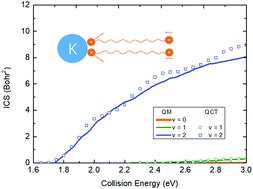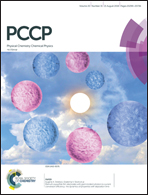Significant effects of vibrational excitation of reactant in K + H2 → H + KH reaction based on a new neural network potential energy surface
Abstract
The study of K + H2 collision has a long experimental history, but there have been few theoretical studies due to lack of a global potential energy surface (PES). In this study, a new global PES for the ground state of KH2 system was constructed based on numerous ab initio points, using the permutation invariant polynomial neural network method. The root mean square error (RMSE) of PES is very small (5.64 meV). On the new PES, time-dependent quantum wave packet (TDWP) and quasiclassical trajectory (QCT) calculations were carried out to study the dynamics of the K(2S) + H2(X1Σ+g) → H(2S) + KH(X1Σ+) reaction. Dynamics results show that (i) the K + H2(v = 0) → H + KH reaction scarcely occurred, (ii) the K + H2(v = 1) → H + KH reaction took place in small quantities, and (iii) the K + H2(v = 2) → H + KH reaction occurred in large quantities. This indicates that vibrational energy of the reactant is significantly more effective at promoting the reaction than the translational energy. This characteristic stems from a major physical model in reactive collisions: the vibrationally excited H2 molecule and K atom collide first in a T-geometric configuration and the vibrational motion of the H2 molecule helps separate the two H atoms a large distance after the collision. At a large H–H distance, a broad well exists on the PES, so the heavy K atom could pull back the light H atom to initiate the reaction. Similar to the reactive channel, vibrational excitation of the reactant also has a significant effect on the collision-induced dissociation channel.



 Please wait while we load your content...
Please wait while we load your content...